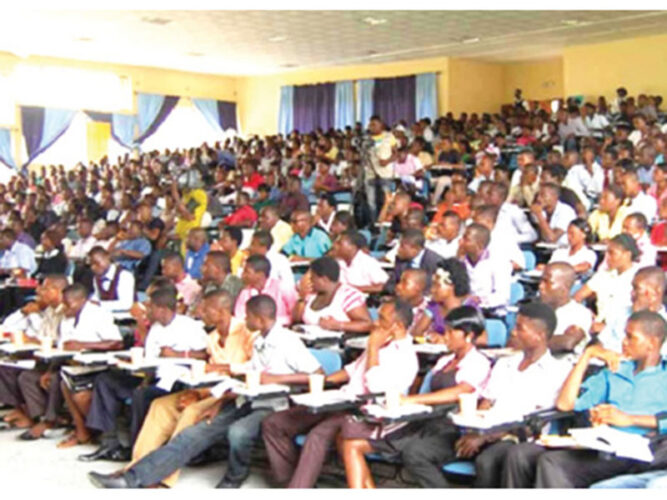Students of tertiary institutions who have successfully applied for the Federal Government’s loan scheme and are beginning new academic sessions will start receiving credit alerts from next week, according to NELFUND Managing Director Akintunde Sawyerr.
Speaking on a monitored programme on Wednesday, Sawyerr stated, “The people who are going to first receive alerts as early as next week are the people who are about to start a new session in the institution, they are in.”
Sawyerr revealed that out of 170,000 applicants from universities, polytechnics, and colleges of education, 110,000 have completed the application process and have accounts with NELFUND.
He explained that there are two types of beneficiaries: the institutions, which will receive payments on behalf of those who have successfully applied, and the students, who will receive a monthly stipend.
“A formal launch of the disbursement circle played out at the State House on Wednesday,” he said, emphasizing that the program aims to provide Nigeria with better leadership in the future and improve the socio-economic situation of the country.
“To be precise, about 110,000 students have successfully applied. They’ve submitted their applications and been verified as bona fide and eligible applicants. But we’ll still carry out further verification to make sure they are well-qualified to receive these loans. But over 110,000 are likely to begin to receive disbursement from next week,” he added.
“It’s one thing to get approval for the loan; it’s another thing to begin to receive value. This loan is for those who are going to be starting institutions afresh or those who are already there.”
Sawyerr noted that applicants must have Joint Admissions and Matriculation Board (JAMB) numbers, matriculation numbers, Bank Verification Numbers (BVN), and National Identification Numbers (NIN), among other requirements.
“Current exposure to students is about N35bn. We’ve got much more than that sitting in our accounts that we can disburse, and we’ve also got some funding on the way. Remember, we are getting 1% of Federal Inland Revenue Service taxes, and we also can receive funding from other sources,” he explained.









